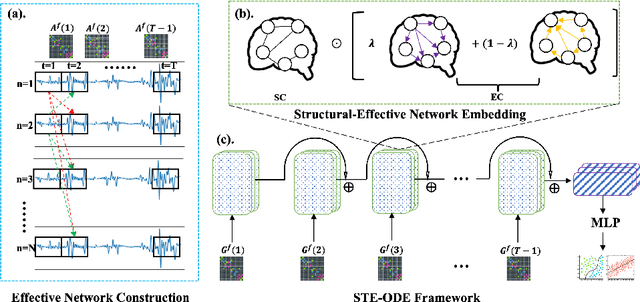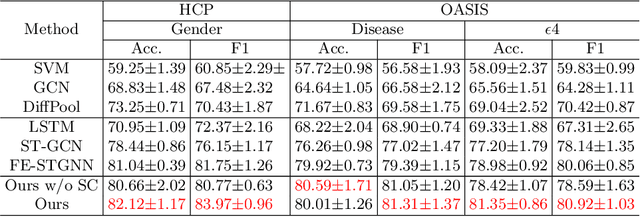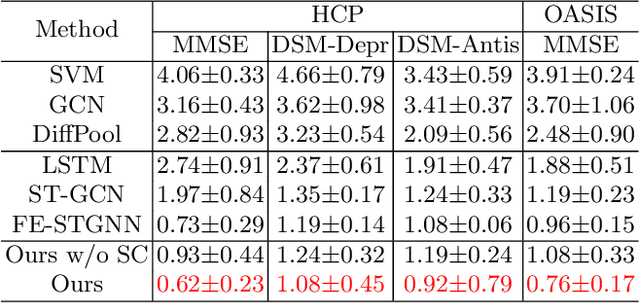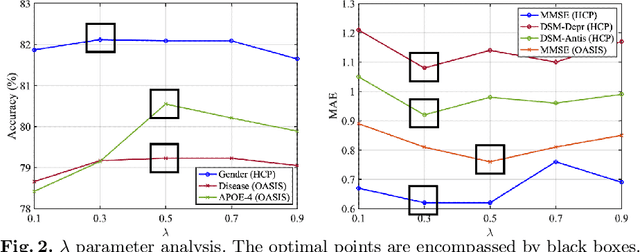Siyuan Dai
Zeus: Zero-shot LLM Instruction for Union Segmentation in Multimodal Medical Imaging
Apr 09, 2025Abstract:Medical image segmentation has achieved remarkable success through the continuous advancement of UNet-based and Transformer-based foundation backbones. However, clinical diagnosis in the real world often requires integrating domain knowledge, especially textual information. Conducting multimodal learning involves visual and text modalities shown as a solution, but collecting paired vision-language datasets is expensive and time-consuming, posing significant challenges. Inspired by the superior ability in numerous cross-modal tasks for Large Language Models (LLMs), we proposed a novel Vision-LLM union framework to address the issues. Specifically, we introduce frozen LLMs for zero-shot instruction generation based on corresponding medical images, imitating the radiology scanning and report generation process. {To better approximate real-world diagnostic processes}, we generate more precise text instruction from multimodal radiology images (e.g., T1-w or T2-w MRI and CT). Based on the impressive ability of semantic understanding and rich knowledge of LLMs. This process emphasizes extracting special features from different modalities and reunion the information for the ultimate clinical diagnostic. With generated text instruction, our proposed union segmentation framework can handle multimodal segmentation without prior collected vision-language datasets. To evaluate our proposed method, we conduct comprehensive experiments with influential baselines, the statistical results and the visualized case study demonstrate the superiority of our novel method.}
A Heterogeneous Graph Neural Network Fusing Functional and Structural Connectivity for MCI Diagnosis
Nov 13, 2024Abstract:Brain connectivity alternations associated with brain disorders have been widely reported in resting-state functional imaging (rs-fMRI) and diffusion tensor imaging (DTI). While many dual-modal fusion methods based on graph neural networks (GNNs) have been proposed, they generally follow homogenous fusion ways ignoring rich heterogeneity of dual-modal information. To address this issue, we propose a novel method that integrates functional and structural connectivity based on heterogeneous graph neural networks (HGNNs) to better leverage the rich heterogeneity in dual-modal images. We firstly use blood oxygen level dependency and whiter matter structure information provided by rs-fMRI and DTI to establish homo-meta-path, capturing node relationships within the same modality. At the same time, we propose to establish hetero-meta-path based on structure-function coupling and brain community searching to capture relations among cross-modal nodes. Secondly, we further introduce a heterogeneous graph pooling strategy that automatically balances homo- and hetero-meta-path, effectively leveraging heterogeneous information and preventing feature confusion after pooling. Thirdly, based on the flexibility of heterogeneous graphs, we propose a heterogeneous graph data augmentation approach that can conveniently address the sample imbalance issue commonly seen in clinical diagnosis. We evaluate our method on ADNI-3 dataset for mild cognitive impairment (MCI) diagnosis. Experimental results indicate the proposed method is effective and superior to other algorithms, with a mean classification accuracy of 93.3%.
Interpretable Spatio-Temporal Embedding for Brain Structural-Effective Network with Ordinary Differential Equation
May 21, 2024



Abstract:The MRI-derived brain network serves as a pivotal instrument in elucidating both the structural and functional aspects of the brain, encompassing the ramifications of diseases and developmental processes. However, prevailing methodologies, often focusing on synchronous BOLD signals from functional MRI (fMRI), may not capture directional influences among brain regions and rarely tackle temporal functional dynamics. In this study, we first construct the brain-effective network via the dynamic causal model. Subsequently, we introduce an interpretable graph learning framework termed Spatio-Temporal Embedding ODE (STE-ODE). This framework incorporates specifically designed directed node embedding layers, aiming at capturing the dynamic interplay between structural and effective networks via an ordinary differential equation (ODE) model, which characterizes spatial-temporal brain dynamics. Our framework is validated on several clinical phenotype prediction tasks using two independent publicly available datasets (HCP and OASIS). The experimental results clearly demonstrate the advantages of our model compared to several state-of-the-art methods.
Constrained Multiview Representation for Self-supervised Contrastive Learning
Feb 05, 2024Abstract:Representation learning constitutes a pivotal cornerstone in contemporary deep learning paradigms, offering a conduit to elucidate distinctive features within the latent space and interpret the deep models. Nevertheless, the inherent complexity of anatomical patterns and the random nature of lesion distribution in medical image segmentation pose significant challenges to the disentanglement of representations and the understanding of salient features. Methods guided by the maximization of mutual information, particularly within the framework of contrastive learning, have demonstrated remarkable success and superiority in decoupling densely intertwined representations. However, the effectiveness of contrastive learning highly depends on the quality of the positive and negative sample pairs, i.e. the unselected average mutual information among multi-views would obstruct the learning strategy so the selection of the views is vital. In this work, we introduce a novel approach predicated on representation distance-based mutual information (MI) maximization for measuring the significance of different views, aiming at conducting more efficient contrastive learning and representation disentanglement. Additionally, we introduce an MI re-ranking strategy for representation selection, benefiting both the continuous MI estimating and representation significance distance measuring. Specifically, we harness multi-view representations extracted from the frequency domain, re-evaluating their significance based on mutual information across varying frequencies, thereby facilitating a multifaceted contrastive learning approach to bolster semantic comprehension. The statistical results under the five metrics demonstrate that our proposed framework proficiently constrains the MI maximization-driven representation selection and steers the multi-view contrastive learning process.
 Add to Chrome
Add to Chrome Add to Firefox
Add to Firefox Add to Edge
Add to Edge